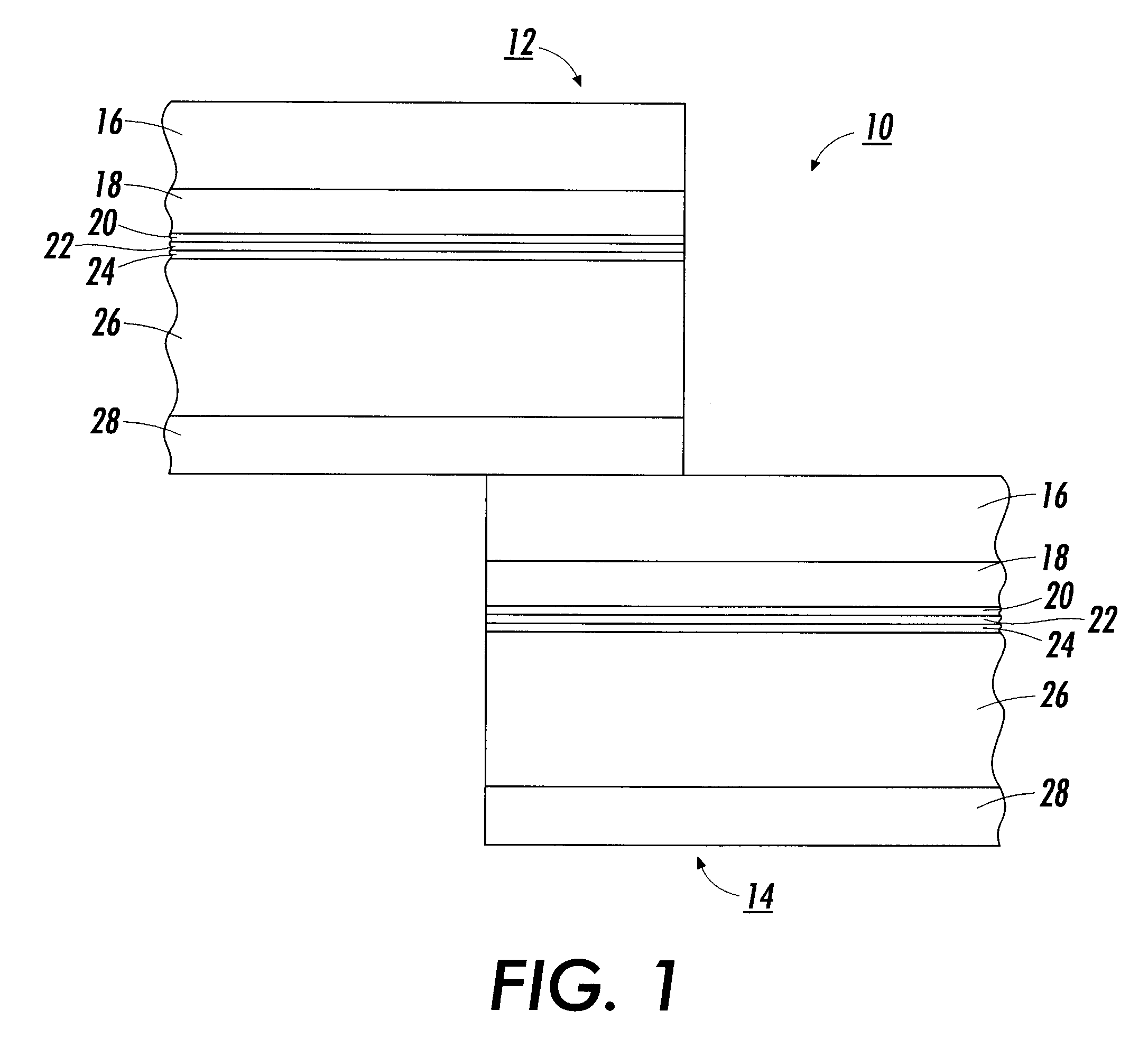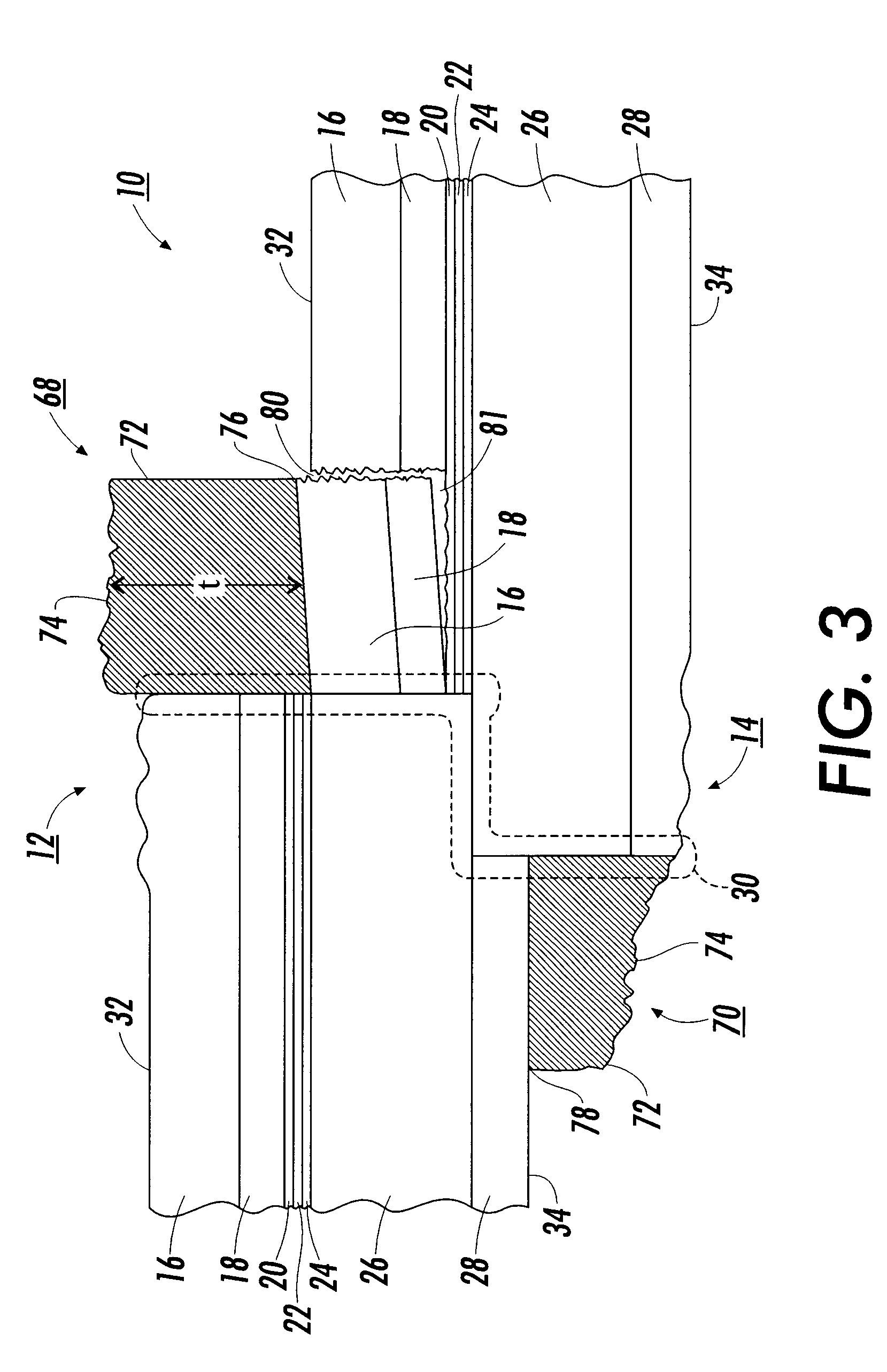Electrostatographic imaging member
a technology of electrographic imaging and member, applied in the direction of instruments, electrographic process equipment, optics, etc., can solve the problems of inability to remove the entire amount of debris inability to remove the entire amount during the cleaning process, and the flap upward movement presents an additional problem, so as to improve the thickness uniformity of the layer, improve the thickness of the backing layer, and improve the effect of anti-curl backing layer fabrication
- Summary
- Abstract
- Description
- Claims
- Application Information
AI Technical Summary
Benefits of technology
Problems solved by technology
Method used
Image
Examples
example iii
IMAGING MEMBER PREPARATION A flexible electrophotographic imaging member web stock was prepared according to Comparative Example II with the exception that the POLYMIST.RTM. dispersion in the anti-curl backing layer coating solution was replaced with ZONYL.RTM. MP1100, a commercial product of PTFE particles available from E.I. du Pont de Nemours & Company, to give a 10 weight percent dispersion of ZONYL.RTM. MP1100 particles in the resulting dry anti-curl backing layer.
ZONYL.RTM. MP1100 consists of small spherical shape PTFE particles prepared by a dispersion polymerization process. The small particle product obtained from this process possess a distinctive narrow particle size distribution of from about 0.19 micrometers to about 0.21 micrometers and an average primary particle size of about 0.20 micrometers. The ZONYL.RTM. MP1100 is also an electron-beam irradiated product. Since the initially formed PTFE particles are soft and are typically agglomerated into clustered particulates...
example iv
IMAGING MEMBER PREPARATION A flexible electrophotographic imaging member web stock was prepared according to Example III, with the exception that the resulting anti-curl backing layer contained ZONYL.RTM. MP1000 dispersion, an alternate PTFE product commercially available from du Pont. Since ZONYL.RTM. MP1000 is prepared by a similar process as the abovementioned ZONYL.RTM. MP1100, the MP1000 particles are also spherical in shape, have about the same particle size distribution, and have the same average primary particle size as the ZONYL.RTM. MP1000. However, the ZONYL.RTM. MP1000 product differs in that it received a lower dose of electron beam irradiation, which required a longer coating solution attrition time in order to break up particle agglomerates into primary particles and to effect homogeneous particle dispersion. The resulting dried anti-curl backing layer prepared with ZONYL.RTM. MP1000 on the imaging member web stock had no apparent bubble defects.
example v
FRICTIONAL WEAR AND RESISTANCE EVALUATION The electrophotographic imaging member web stocks of the above Control Example 1, Comparative Example II, and Examples III and IV were evaluated for interfacial contact friction interaction between the charge transport layer and the anti-curl backing layer to assess surface frictional forces that arise between these two contacting surfaces in a 6,000 foot wound up roll of an imaging member web stock. More specifically, the effect of the dispersed PTFE particles in the anti-curl backing layer on reduction of surface contact friction against the charge transport layer was determined. The coefficient of friction test was carried out by fastening a sample of an imaging member from each of the above mentioned Examples to a flat platform surface with the charge transport layer facing upwardly. Another identical imaging member sample from each Example was secured to the flat surface of the bottom of a horizontally sliding plate weighing 200 grams w...
PUM
| Property | Measurement | Unit |
|---|---|---|
| diameter particle size | aaaaa | aaaaa |
| diameter particle size distribution | aaaaa | aaaaa |
| diameter particle size distribution | aaaaa | aaaaa |
Abstract
Description
Claims
Application Information
 Login to View More
Login to View More - R&D
- Intellectual Property
- Life Sciences
- Materials
- Tech Scout
- Unparalleled Data Quality
- Higher Quality Content
- 60% Fewer Hallucinations
Browse by: Latest US Patents, China's latest patents, Technical Efficacy Thesaurus, Application Domain, Technology Topic, Popular Technical Reports.
© 2025 PatSnap. All rights reserved.Legal|Privacy policy|Modern Slavery Act Transparency Statement|Sitemap|About US| Contact US: help@patsnap.com



